
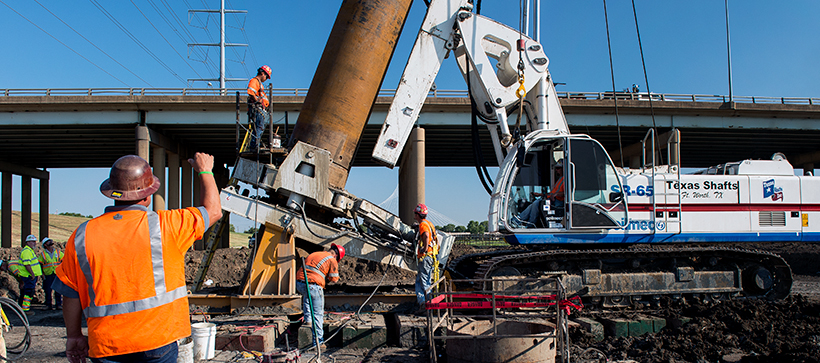
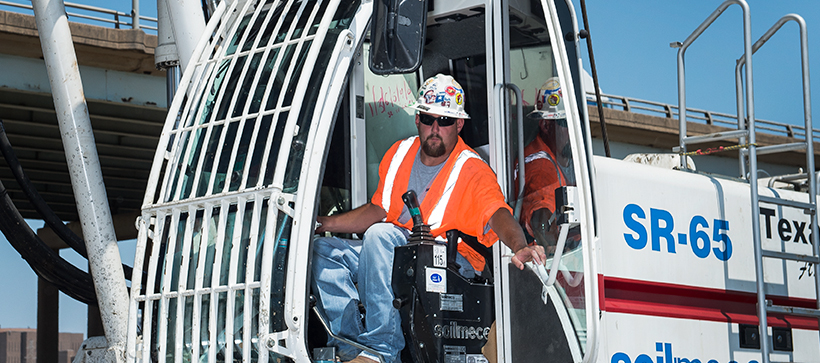
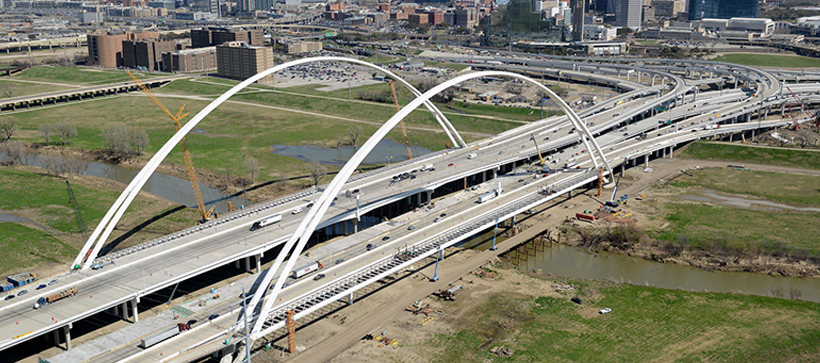
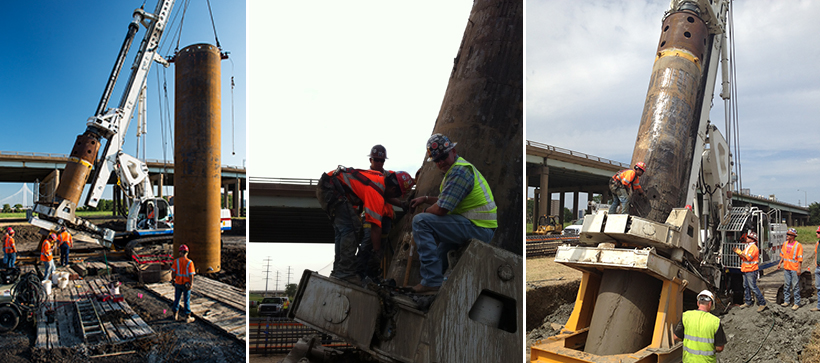
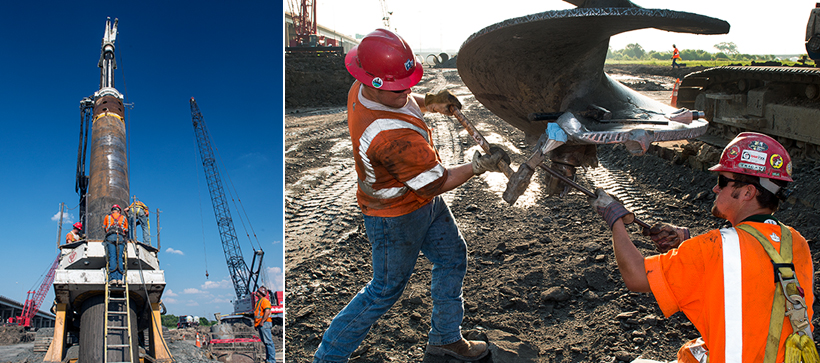
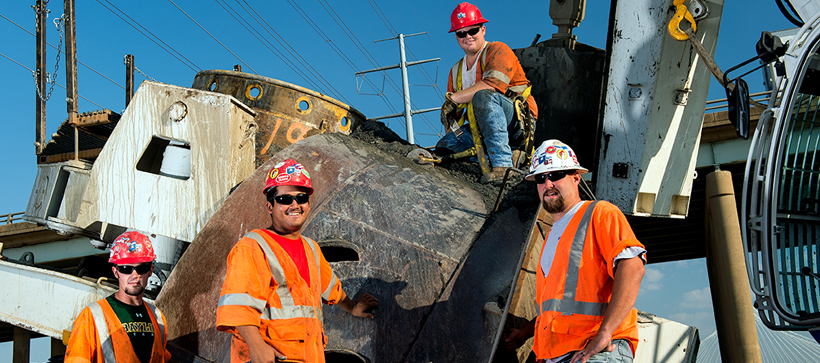
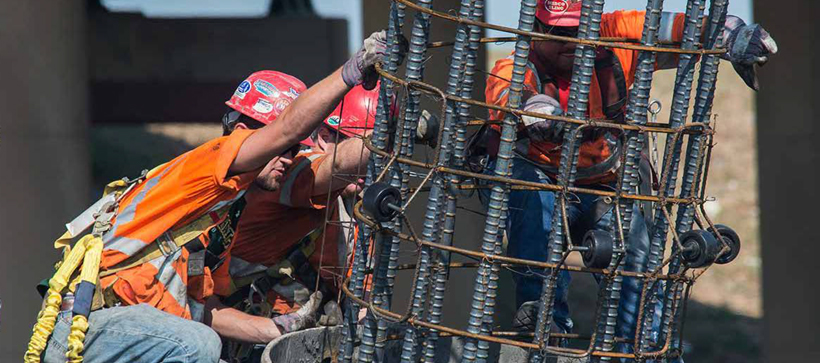








Location: Western corridor of Interstate 30 in Dallas, Texas
The Margaret McDermott Bridge is the gateway for I-30 coming in and out of downtown Dallas. The highlight of this project is not the actual traffic lanes themselves, but the suspension arches that hold up pedestrian walkways on either side of the interstate. These thrust arch spans are 1,125 feet long, 350 feet high. Very high lateral loads from the thrust arches of 1,975 tons. As a result, conventional foundation methods were not possible for supporting them. The drill shafts underneath each prong of the arches—which were 48 inch drilled shafts approximately 80 feet deep—required using sectional casing with an oscillator installing drilled shafts on a 20-degree batter, which had never been accomplished on a scale this large before. Because of this steep angle, traditional drilling methods were too unstable therefore, an engineered frame was designed to hold the oscillator. Segmented casing was then oscillated into the overburden soils until competent bearing stratum was hit. With the casing in place—and stiff bearing in this area—regular drilling was used to complete the penetration. Due to the batter, a non-conventional centralizing system was used to ensure that the reinforcing cage was placed with the proper concrete cover throughout the shaft consisting of large rollers that were welded along the entire bottom 180-degrees of the shaft. This allowed for both proper centralization and easier installation as the cage could roll down the casing until in place. Just as with excavation of the shaft, the casing was oscillated out in sections during concrete placement until completion.
